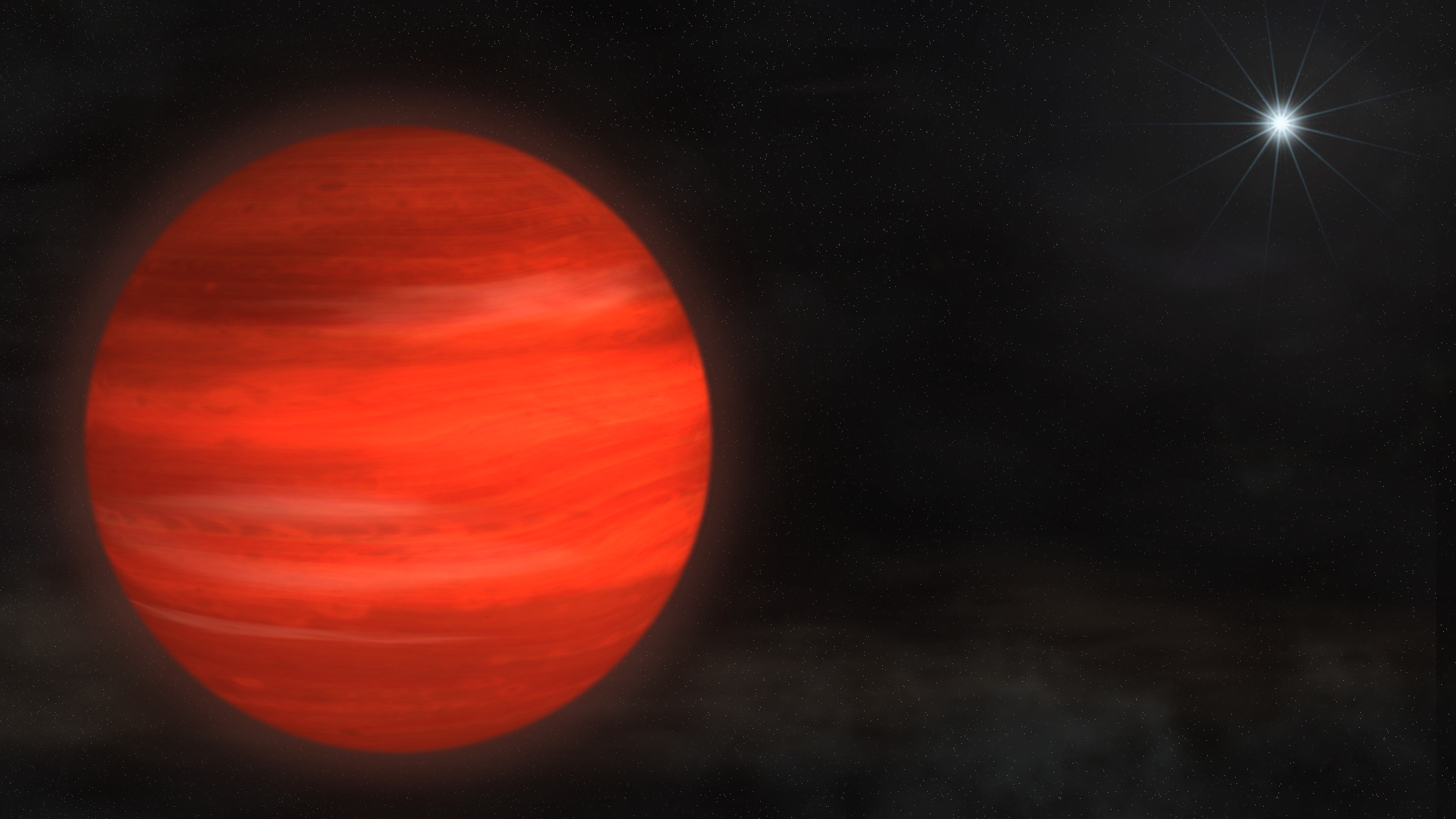Astronomers Directly Image Jovian Planet Around GJ 504
Using infrared data from the Subaru Telescope in Hawaii, an international team of astronomers has imaged a giant planet around the bright star GJ 504. Several times the mass of Jupiter and similar in size, the new world, dubbed GJ 504b, is the lowest-mass planet ever detected around a star like the sun using direct imaging techniques.
If we could travel to this giant planet, we would see a world still glowing from the heat of its formation with a color reminiscent of a dark cherry blossom, a dull magenta.
GJ 504b orbits its star at nearly nine times the distance Jupiter orbits the sun, which poses a challenge to theoretical ideas of how giant planets form.
According to the most widely accepted picture, called the core-accretion model, Jupiter-like planets get their start in the gas-rich debris disk that surrounds a young star. A core produced by collisions among asteroids and comets provides a seed, and when this core reaches sufficient mass, its gravitational pull rapidly attracts gas from the disk to form the planet.
While this model works fine for planets out to where Neptune orbits, about 30 times Earth's average distance from the sun (30 astronomical units, or AU), it's more problematic for worlds located farther from their stars. GJ 504b lies at a projected distance of 43.5 AU from its star; the actual distance depends on how the system tips to our line of sight, which is not precisely known.
The research is part of the Strategic Explorations of Exoplanets and Disks with Subaru (SEEDS), a project to directly image extrasolar planets and protoplanetary disks around several hundred nearby stars using the Subaru Telescope on Mauna Kea, Hawaii. The five-year project began in 2009 and is led by Motohide Tamura at the National Astronomical Observatory of Japan (NAOJ).
While direct imaging is arguably the most important technique for observing planets around other stars, it is also the most challenging.
The SEEDS project images at near-infrared wavelengths with the help of the telescope's novel adaptive optics system, which compensates for the smearing effects of Earth's atmosphere, and two instruments: the High Contrast Instrument for the Subaru Next Generation Adaptive Optics and the InfraRed Camera and Spectrograph. The combination allows the team to push the boundary of direct imaging toward fainter planets.
GJ 504b is about four times more massive than Jupiter and has an effective temperature of about 460 degrees Fahrenheit (237 Celsius). It orbits the G0-type star GJ 504, which is slightly hotter than the sun and is faintly visible to the unaided eye in the constellation Virgo. The star lies 57 light-years away and the team estimates the system is about 160 million years old, based on methods that link the star's color and rotation period to its age.

Glowing a dark magenta, the newly discovered exoplanet GJ 504b weighs in with about four times Jupiter's mass, making it the lowest-mass planet ever directly imaged around a star like the sun. Artist's rendering.
Credit: NASA's Goddard Space Flight Center/S. Wiessinger

This chart locates the fifth-magnitude star GJ 504, also known as 59 Virginis, which is visible to the unaided eye from suburban skies. Labeled version.
Credit: NASA's Goddard Space Flight Center

This chart locates the fifth-magnitude star GJ 504, also known as 59 Virginis, which is visible to the unaided eye from suburban skies. Unlabeled version.
Credit: NASA's Goddard Space Flight Center

This composite combines Subaru images of GJ 504 using two near-infrared wavelengths (orange, 1.6 micrometers, taken May 2011; blue, 1.2 micrometers, April 2012). Once processed to remove scattered starlight, the images reveal the orbiting planet, GJ 504b. The 2012 image was rotated by .9 degrees to compensate fro the planet's observed orbital motion. Labeled version.
Credit: NASA's Goddard Space Flight Center/NAOJ

This composite combines Subaru images of GJ 504 using two near-infrared wavelengths (orange, 1.6 micrometers, taken May 2011; blue, 1.2 micrometers, April 2012). Once processed to remove scattered starlight, the images reveal the orbiting planet, GJ 504b. The 2012 image was rotated by .9 degrees to compensate fro the planet's observed orbital motion. Unlabeled version.
Credit: NASA's Goddard Space Flight Center/NAOJ
For More Information
Credits
Please give credit for this item to:
NASA's Goddard Space Flight Center. However, individual images should be credited as indicated above.
-
Illustrator
- Scott Wiessinger (KBR Wyle Services, LLC)
-
Producer
- Scott Wiessinger (USRA)
-
Science writer
- Francis Reddy (University of Maryland College Park)
-
Graphics
- Francis Reddy (University of Maryland College Park)
Release date
This page was originally published on Monday, August 5, 2013.
This page was last updated on Wednesday, May 3, 2023 at 1:51 PM EDT.
